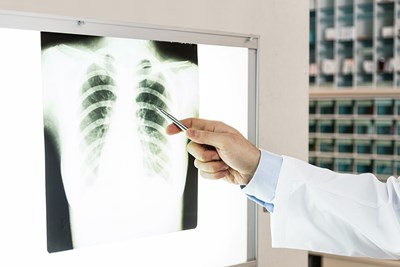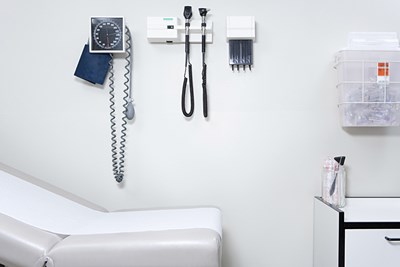Reactive airway disease (RAD) does not refer to a singular condition, but rather refers to a group of conditions caused by a narrowing of the airways. RAD is the term that is used until a specific diagnosis is made.
A patient may be diagnosed with asthma, chronic obstructive pulmonary disease (COPD), bronchiolitis, or viral upper respiratory infection. Commonly, however, RAD is used interchangeably with asthma because symptoms appear to be asthmatic. However, asthma may not always be the correct diagnosis. Here’s a look at everything you need to know about this condition, including its symptoms, causes, diagnosis, and treatments.
RAD Symptoms
The most common symptom for RAD is a high-pitched wheezing or whistling sound when breathing. Other respiratory symptoms that may occur include a tightness in chest, difficulty breathing, shortness of breath, and coughing.
RAD Causes
A combination of factors, such as environment and genetics may cause RAD, but the exact cause is uncertain. It is known, however, that heightened sensitivity of the airways causes symptoms. More specifically, when the airways are triggered, muscles surrounding the airway tighten and the lining of the airways swell, producing extra mucus and narrowing the airways, making breathing difficult.
RAD Risk Factors
The following factors may contribute to your chance of RAD:
- Smoking
- Obesity
- Allergies
- Family history of RAD or asthma
RAD Diagnosis
It is important to keep track of your symptoms. If they continue or worsen, see a doctor as soon as possible. They will usually inquire about your medical history, as well as your symptoms and what you were near or doing when the symptoms occurred. For example, if symptoms developed around pets, certain plants, or smoke, these could be possible triggers.
Tests may be ordered to help with identifying or confirming a specific diagnosis. These include:
- Chest X-ray: an image of the heart, lungs, and chest wall
- Mucus samples: a sample of fluid from the nose or throat.
- Spirometry: a test that evaluates the size of your airways by taking a deep breath and then pushing the air out as fast as you can
- Blood test: may be drawn to test for infection or other conditions
RAD Treatment
After identifying the condition associated with RAD, a doctor will be able to work with you in finding the right treatment plan. Medications are commonly used to treat RAD and prevent symptoms. These include bronchodilators to open the airways, corticosteroid medications to decrease inflammation, or mast cell stabilizers and leukotriene inhibitors to prevent inflammation. A combination of these medications may be used.
Other treatment options include an oxygen mask or nasal cannula, which is a device with small tubes set in the nose. Prevention methods can also be practiced, such as avoiding known triggers.



